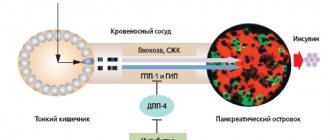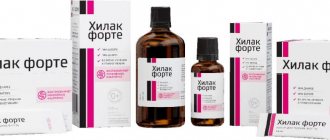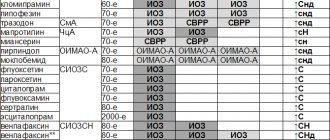Erectile dysfunction (ED) is a common problem among the male population. Every sixth man in the world suffers from ED of varying severity. Among people over 40 years of age, the incidence of ED is even higher [1]. Although ED is not a serious health disorder, it can significantly worsen a man’s mental status, significantly reducing the quality of life, and impede reproductive health. In addition, against the background of ED, anxiety and depression often develop, nervousness and irritability increase. Until the mid-90s of the 20th century, treatment of ED was a difficult task to solve. But after the discovery of phosphodiesterase type 5 inhibitors (PDE-5), a powerful and fairly safe tool in the fight against this disease appeared [2]. However, for a significant part of the population this fact remains unknown, since patients rarely complain to the doctor about ED. This may be due to the fact that men are embarrassed by their problem and are not ready to discuss it with strangers, or to the belief that ED is an inevitable age-related problem. This situation is aggravated by the fact that among men there is an opinion that PDE-5 inhibitors lead to serious side effects, including from the cardiovascular system, and are addictive. As a result, a situation emerged: only 22% of surveyed men with ED seek help from a doctor. But even among patients who consult a doctor, only 36.9% receive treatment for ED [3]. Thus, the vast majority of men suffering from ED (more than 90%) are deprived of justifiable treatment.
The reason for the low prescription of treatment seems to be that doctors, including general practitioners, are not sufficiently aware of the possibilities of correcting erectile function using PDE-5 inhibitors, as well as low awareness of the safety profile of drugs in this group. Therefore, it seems advisable to clearly identify all existing side effects of taking PDE5 inhibitors and describe contraindications. In addition, the dialogue between the doctor and the patient is important when discussing the correction of ED, which will allow the doctor and his patient not only to understand the real benefits and risks of treatment, but also to discard the patient’s unfounded prejudices regarding their safety.
PRINCIPLE OF OPERATION OF PDE-5 INHIBITORS FOR ERECTILE DYSFUNCTION
The erection mechanism involves a signaling metabolite, cyclic guanosine monophosphate (cGMP). In the body it is destroyed by the enzyme PDE. In the corpus cavernosum of the penis, its separate isoform, PDE-5, operates, which is absent in other organs. PDE5 inhibitor drugs slow down the degradation of cGMP, which significantly enhances erection. The effect is achieved only in the presence of sexual stimulation. Otherwise, the release of cGMP in the corpus cavernosum does not occur and taking PDE-5 inhibitors is not accompanied by an erection.
The effectiveness of PDE5 inhibitors depends on the nature of ED. Psychogenic ED is most susceptible to therapy, organic ED - to a slightly lesser extent. About 10% of ED cases are not treatable. Among the somatic causes of organic ED, vascular diseases are most favorable for treatment.
Among the PDE-5 inhibitors in Russia, the most used are the following: Sildenafil (Viagra, Dynamic), Vardenafil (Levitra), Tadalafil (Cialis), Udenafil (Zidena).
EFFECTIVENESS OF PDE-5 INHIBITORS FOR ERECTILE DYSFUNCTION
Qualitatively, the effectiveness of PDE-5 inhibitors is described by the following data collected in different but similar experiments in design. All were randomized, placebo-controlled studies involving more than 200 patients and lasting 4 weeks. During this period, patients were required to test the drug at least 6 times. Among patients taking sildenafil, 74% reported improved erectile function (versus 16% in the placebo group). Among patients taking vardenafil, 81% reported improvement (versus 39% in the placebo group). Among patients taking tadalafil, 84% reported improvement (versus 33% in the placebo group). However, such data is very subjective. A more objective characteristic is the frequency of successful sexual intercourse. For sildenafil (25-100 mg) it was 65% (with 20% in the placebo group), for vardenafil (20 mg) – 65% (with 32% in the placebo group), for tadalafil (20 mg) – 68% ( at 31% – in the placebo group) [4].
The effectiveness of PDE-5 inhibitors can be conveniently measured using the IIEF (International Index of Erectile Function) scale. PDE5 inhibitors have similar high efficacy. Thus, taking one of the substances: sildenafil (100 mg), tadalafil (20 mg) or vardenafil (20 mg) increases erectile function by an average of 74% (from 17 to 29 IIEF points). Differences in quantitative effectiveness between drugs at the indicated dosages are not significant [2]. Also worth mentioning is the new PDE5 inhibitor, udenafil. There is still very little information about it, so it is not possible to give a detailed assessment of its effectiveness. According to pilot data, it is comparable to the effectiveness of the drugs described above [5].
The data presented cannot be used to compare drugs, since the experimental conditions, the selection of patients and the severity of ED in them differed. Therefore, we can conclude that all three PDE5 inhibitors (sildenafil, vardenafil, tadanafil) are highly effective. Taking the drug against the background of ED allows you to achieve successful sexual intercourse in two-thirds of cases, and achieve subjective improvement in erection in three-quarters of cases. These figures are significant if we take into account that non-pharmacological means (lifestyle changes, psychological help, etc.) can achieve improvement in 20-30% of cases, which approximately corresponds to the placebo effect in the above studies.
It is important to note that the effectiveness of a PDE5 inhibitor drug cannot be assessed with a single dose. You should make several attempts and increase the dosage to the maximum recommended. Therefore, studies on the effectiveness of these drugs last several weeks and involve several attempts at sexual intercourse. This does not mean that it is permissible to take overdoses of drugs in special cases. Exceeding the maximum dosage (for sildenafil - over 200 mg) does not lead to an increase in effectiveness, but it does lead to a dose-dependent increase in side effects [4]. This fact must be conveyed to patients.
SAFETY OF USE OF PDE-5 INHIBITORS FOR ERECTILE DYSFUNCTION
PDE-5 inhibitors do not have absolute selectivity for PDE-5 and partially suppress the activity of other isoforms of this enzyme: PDE-1, PDE-6, PDE-11. This leads to the accumulation of cGMP not only in the penis, but also in other organs. This is precisely what causes the manifestation of various side effects of PDE-5 inhibitors [1]. Cyclic GMP is involved in a wide variety of signaling pathways, acting as an activator of protein kinases. Therefore, the side effects associated with excess cGMP in different organs are very variable.
In general, all PDE5 inhibitor drugs have a good safety profile. In terms of the spectrum of side effects, PDE-5 inhibitor drugs are similar, but also have some differences. The frequency of the most typical and statistically significant side effects is given in table. 1.
Table 1. Frequency of side effects (%) when using PDE-5 inhibitors [16, 17].
| By-effect | Sildenafil | Tadalafil | Vardenafil | |
| Viagra | Dynamico [16] | |||
| Headache | 12,8 | 10 | 14,5 | 16 |
| Flushes of blood | 10,4 | 5 | 4,1 | 12 |
| Dyspepsia | 4,6 | not recorded | 12,3 | 4 |
| Nasal congestion | 1,1 | 1 | 4,3 | 10 |
| Dizziness | 1,2 | not recorded | 2,3 | 2 |
| Visual impairment, color perception | 1,9 | not recorded | — | <2 |
| Backache | — | — | 6,5 | — |
| Myalgia | — | — | 5,7 | — |
We emphasize that the table shows the proportion of patients who complained of a specific side effect at least once. Moreover, in half of the cases, patients did not feel it every time, but only in a single case [6]. The absolute frequency of certain side effects varies greatly from experiment to experiment. In the placebo group, as a rule, all the same side effects were observed as in the experimental group, except for disturbances in color perception. The frequency of side effects in the placebo group is usually 2-3 times less than in the experimental group, but is still significant. The most common symptoms that occur when taking PDE5 inhibitors are headache, flushing, and digestive disorders [7]. All these side effects are quite easily tolerated and do not require treatment. The vast majority of patients do not consider them significant and do not refuse to continue taking the drug.
Recently, a generic version of sildenafil has been available on the Russian market under the trade name Dynamico (Teva LLC, Israel). The drug has proven itself to be effective for correcting erectile function and has a minimal number of side effects, generally comparable to the group of PDE-5 inhibitor drugs [16].
There are practically no qualitative differences in the spectrum of side effects of sildenafil and vardenafil. But tadalafil is somewhat different from them. Thus, sildenafil and vardenafil have a specific side effect: impaired vision and color perception. This is due to partial inhibition of PDE-6 located in the retina. This is not typical for tadalafil. But tadalafil has a significant side effect: muscle and back pain, probably associated with PDE-11 inhibition. These pains may require relief with NSAIDs and are the reason for drug discontinuation [7]. In addition to qualitative differences, there are also differences in the duration of side effects. Tadalafil has the longest duration. It is almost 2-4 times higher than this figure for sildenafil and vardenafil. About 30% of tadalafil side effects last 12 hours or more. Which is expected, since the drug is positioned as a long-term agent [8]. It seems necessary to convey this information to the patient in order to provide the patient with the opportunity to choose between the convenience of administration and the severity (duration) of side effects.
Among the drugs in the group of PDE-5 inhibitors, sildenafil has been used the longest and has been most fully studied. Using sildenafil as an example, it can be argued that PDE-5 inhibitors do not lead to the development (exacerbation) of cardiovascular diseases. An exceptionally large statistical base allows us to assert that the frequency of observed cardiovascular events (myocardial infarction, transient ischemic attacks, angina attacks, sudden death) completely coincides with age norms (or with the frequency in the placebo group for clinical studies) [11]. The very fact of such events in patients is quite expected, since the target group is men over 45 years of age, for whom cardiovascular diseases are not uncommon. Thus, when prescribing PDE-5 inhibitors (at least sildenafil), you can be confident in their complete safety for the cardiovascular system.
A common misconception among men with erectile dysfunction is that PDE5 inhibitors are addictive. This means the inability to achieve an erection after stopping the drug - to the extent that it was achieved before the drug was prescribed. However, these drugs are competitive inhibitors of the enzyme that do not affect its expression. In turn, excess cGMP directly activates both PDE and protein kinases, which again eliminates the overexpression of PDE and protein kinases. Therefore, addiction to PDE5 inhibitors is unlikely. However, only long-term clinical studies can provide a reliable answer. The longest studies were conducted again for sildenafil. It can be argued that sildenafil does not cause addiction over long-term (4 or more years) and regular use [12]. Indirect confirmation is the fact that most patients did not increase the effective dosage for several years: if addiction developed, the dosage would have to be constantly increased. However, it should be noted that some patients (about 5%) refused to take sildenafil after several years due to loss of effectiveness. But in the case of physiologically determined dependence, the number of patients could not possibly be limited to five percent. However, it is quite difficult to assess erectile function before prescribing the drug and after discontinuing the drug (in both cases there will be dysfunction). Therefore, it is worth citing data from studies conducted on healthy volunteers (with normal erections). The duration of these studies was much shorter and studying the problem of addiction was not the purpose of these studies. However, it should be noted that in this case, addiction was also not recorded [13,14].
The situation is somewhat different with psychological dependence. Psychological dependence refers to the inability to achieve an erection after discontinuation of the drug for psychosomatic reasons. It is observed in one form or another in 0.8% of cases after discontinuation of the drug [9]. In situations where ED is moderate or severe, the risk of psychological dependence can be neglected.
Thus, there is no risk of physiological addiction for sildenafil, and the risk of psychological addiction is insignificant. We believe that this also applies to other PDE5 inhibitor drugs, which do not have such a long observational history as sildenafil. Although some authors believe that for other drugs (especially with a long period of action) additional experiments are required [12].
Separately, it is worth dwelling on the contraindications for PDE-5 inhibitors. Some experts believe that this list is so broad that there is always a risk of incorrect prescription. Contraindications for taking PDE5 inhibitors are hypersensitivity and nitrate therapy. Less categorical restrictions are associated mainly with the vasodilatory effect of PDE-5 inhibitors. Therefore, you should avoid prescribing drugs to patients who have recently (in the last 6-8 weeks) suffered a stroke, myocardial infarction, unstable angina, severe deviations in blood pressure, or severe heart failure. Like most xenobiotics, they should not be prescribed for severe hepatic or renal impairment. In addition, it is important to assess the condition of the penis. The drug should not be prescribed for anatomical deformations of the penis (curvature of the penis, cavernous fibrosis, Peyronie's disease), as well as diseases that contribute to the development of priapism. The drug should not be taken for retinitis pigmentosa [7].
So, if the effectiveness of various PDE-5 inhibitors is practically the same, then the choice of drug will be determined by the risk of side effects. It seems to us that the most studied and safest drug is sildenafil. Don't forget about the convenience of tadalafil's long-lasting effects, but it can come with longer-lasting side effects.
CONCLUSION
Patients and some doctors are wary of using PDE5 inhibitors. The main concerns are related not so much to the effectiveness of the drug, but to its safety. Suspicions about possible cardiovascular side effects, as well as withdrawal syndrome (development of addiction to the drug), are discussed.
PDE5 inhibitors are an effective treatment for ED. Taking the drugs increases erectile function by an average of 75% on the IIEF scale, which is usually enough for successful sexual intercourse in two thirds of cases. The effect of sildenafil lasts about 4 hours, vardenafil - up to 8 hours, while the effect of tadalafil lasts much longer - about 36 hours. PDE-5 inhibitors are well-tolerated, safe agents. Concerns about severe side effects such as cardiovascular events, including myocardial infarction, are unfounded. Long-term clinical and post-marketing studies of sildenafil make it possible to exclude the possibility of such risks. The incidence of cardiovascular events does not change with the use of drugs. Using the example of sildenafil, it is shown that fears of developing addiction or tolerance to the drug are also not justified. In terms of safety, we believe that drugs with a short duration of action are preferable. Long-acting medications may be convenient in some cases, but come with longer-lasting side effects. Among drugs with a short duration of action, sildenafil is the most studied and safe.
LITERATURE
- Gresser U, Gleiter CH. Erectile dysfunction: comparison of efficacy and side effects of the PDE-5 inhibitors sildenafil, vardenafil and tadalafil review of the literature. //Eur J Med Res. 2002. Vol. 7, N 10. P. 435-446.
- Berner MM, Kriston L, Harms A. Efficacy of PDE-5 inhibitors for erectile dysfunction. A comparative meta-analysis of fixed-dose regimen randomized controlled trials administering the International Index of Erectile Function in broad-spectrum populations. // Int J Imp Res. 2006. Vol. 18, N
- P. 229–235. 3. Costa P. et al., 2003 cited. by: A. L. Vertkin, D. Yu. Pushkar, A. V. Topolyansky, A. S. Segal. Erectile disfunction. // Attending doctor. 2003. N 7. P. 54-60
- Wright PJ. Comparison of phosphodiesterase type 5 (PDE5) inhibitors. // Int J Clin Prac. 2006. Vol. 60, Issue 8. P. 967–975
- Kang SG, Kim JJ. Udenafil: efficacy and tolerability in the management of erectile dysfunction. // er Adv Urol. 2013/Vol. 5, N 2. P. 101-110.
- Tolrà JR, Campaña JM, Ciutat LF, Miranda EF. Prospective, randomized, open-label, fixed-dose, crossover study to establish preference of patients with erectile dysfunction aer taking the three PDE-5 inhibitors. // J Sex Med. 2006. Vol. 3, N 5. P. 901–909.
- Register of Medicines of Russia. Radar 2012.
- Taylor J, Baldo OB, Storey A, Cartledge J, Eardley I. Differences in side-effect duration and related bother levels between phosphodiesterase type 5 inhibitors. // BJU Int. 2009. Vol.103, N 10. P. 1392-1395.
- Giuliano F, Jackson G, Montorsi F, Martin-Morales A, Raillard P. Safety of sildenafil citrate: review of 67 double-blind placebo-controlled trials and the postmarketing safety database. // Int J Clin Pract. 2010. Vol. 64, N 2. P. 240–255.
- New York, NY: Pfizer Inc; IMS commissioned report and 2.7.4. Summary of Clinical Safety. Data on File.
- Giuliano F, Porst H, Hedelin H, Martin-Morales A, Sobel R, Reynolds R, Glasser D. Cardiovascular safety of Viagra®: results of the international men's health study. // XXth Congress of EAU 16-19 March, 2005. Eur Urol. 2005. Vol. 4, N 3. P. 137. Abstr. 540
- McMurray JG, Feldman RA, Auerbach SM, Deriesthal H, Wilson N. Long-term safety and effectiveness of sildenafil citrate in men with erectile dysfunction. // er Clin Risk Manag. 2007. Vol. 3, N 6. P. 975–981
- Kamalov A.A., Efremov E.A., Dorofeev S.D., Okhobotov D.A. Selective phosphodiesterase type 5 inhibitors in the treatment of erectile dysfunction: introduction of new drugs. // Cons Medicum. 2003.T. 5, N 7. pp. 422-426.
- Bechara A, Casabé A, De Bonis W, Helien A, Bertolino MV. Recreational use of phosphodiesterase type 5 inhibitors by healthy young men. // J Sex Med. 2010. Vol.7, N 11. P. 3736-3742.
- Korkes F, Costa-Matos A, Gasperini R, Reginato PV, Perez MD. Recreational use of PDE5 inhibitors by young healthy men: recognizing this issue among medical students. // J Sex Med. 2008. Vol. 5, N 10. P. 2414-2418.
- Kamalov A.A., Okhobotov D.A., Osmolovsky B.E., Takhirzade A.M., Gevorkyan A.R. Combination therapy of patients with lower urinary tract symptoms and erectile dysfunction // Natural and technical sciences. 2013. N 1. P. 105-113
- Clinical practice guidelines. Management of BPH (revised, 2010).// URL:www.eau.org/content/clinical-practice-guidelines/clinicalguidelines. cfm?sub=bph.
| Attached file | Size |
| 185.84 kb |
‹ Possibilities of neoadjuvant and adjuvant hormonal therapy in the combined treatment of prostate cancer Up Remote and contact ureterolithotripsy in the treatment of large stones of the upper third of the ureter ›
Efficiency or safety?
Inhibitors of this type have proven themselves to be the best in the treatment of male impotence. In terms of effectiveness, all drugs do not differ much from each other; the main difference lies in the duration of action on the body. The record holder for this parameter is definitely tadalafil, the effect of which on male potency lasts up to 36 hours.
Despite the undoubted advantages of taking these medications, they all have contraindications and side effects. The pharmaceutical industry says any concerns about severe side effects are unfounded. However, their statements do not change the fact that all instructions for use of PDE-5 enzyme blockers present an impressive list of possible undesirable consequences.
To avoid the occurrence of negative factors after taking medications for impotence , you need to consult a competent specialist.
Contraindications and side effects
Inhibitor drugs have a decent list of pathologies for which their use is contraindicated, as well as a number of unpleasant side effects. These options are listed below.
Contraindications
| Acceptability of use | ||||
| Udenafil | Vardenafil | Tadalafil | Sildenafil | |
| Sensitivity to the components of the drug | — | |||
| Female | — | Allowed | ||
| Stroke/heart attack | Carefully | — | ||
| Taking nitric oxide donors | — | |||
| Taking α-blockers (for example, carvedilol-q , magurol ) | Acceptable in low doses | — | Allowed only if hemodynamically stable | |
| Penis deformity | Carefully | |||
| Hypotension | Carefully | — | ||
| Degenerative retinal diseases | Under the supervision of a doctor | — | Under control | — |
| Age less than 18 years | — | Prohibited under 16 years of age | — | |
| Leukemia | — | — | — | — |
| Taking nitrates | — | — | — | — |
| Elderly age | — | Carefully | Approved for use | |
| Myeloma | — | — | ||
| Pregnancy | — | Used for preeclampsia | ||
| Liver and/or renal failure | — | Carefully | — | |
| Sickle cell anemia | — | Under the supervision of a doctor | ||
“-” reception is prohibited.
All phosphodiesterase enzyme inhibitor drugs have undesirable side effects. Here are some of them:
- rushes of blood to the skin of the face;
- dizziness;
- involuntary lacrimation;
- pain in the eyes;
- swelling of the skin of the face and body;
- allergic dermatitis;
- impaired color vision (typical of sildenafil);
- rhinitis;
- dryness of the mucous membranes of the nose and mouth;
- migraine;
- photophobia;
- muscle pain;
- heartburn;
- surges in blood pressure.
What are the causes of erectile dysfunction?
If earlier the main causes of erectile dysfunction were considered to be various psychological problems, now the opinion has changed. It is now known that the disorder in 80% of cases is of organic origin and appears as a complication of various types of somatic diseases.
Main organic causes: hypogonadism (dishormonal conditions); angiopathy; neuropathy.
The prevalence of pathology of the heart and blood vessels is very high, more than 50% of the stronger sex with such diseases have erectile dysfunction, but not every patient uses PDE-5 inhibitors - a kind of “gold standard” in the treatment of defects in sexual function. Why does this happen? Unfortunately, until now, patients are extremely wary of such drugs, despite the fact that their effectiveness has already been proven.
Compatibility with alcohol and other medications
The active ingredients of PDE-5 can interact with many medications, therefore, before using any medication during the treatment of erectile dysfunction, you should carefully study its instructions or, best of all, consult your doctor.
Studies have shown that taking alcohol together with udenafil or vardenafil does not affect the absorption of the drug. But when drinking strong drinks together with tadalafil, the effect of the latter is enhanced, therefore, in order to avoid problems, alcohol should be consumed in limited quantities. Also, you should not get carried away with alcohol when using sildenafil - in small doses this combination is acceptable, in large doses it can be harmful, since the risk of developing side effects is guaranteed to increase.
General principles of treatment
Before selecting medications for the treatment of disorders of the reproductive system, it is important for a man to accurately establish the somatic and mental causes of the disorders. The following factors can affect erection:
- taking potent medications;
- the presence of concomitant systemic diseases;
- lifestyle (passive behavior, bad habits, overeating, etc.);
- frequent stress and depression.
If, after eliminating such preconditions for erectile dysfunction, the problem has not been solved, you can first resort to the help of a psychotherapist or sexologist. Conservative methods of treatment can include correcting nutrition, giving up bad habits, playing sports, losing weight, and eliminating situations that lead to stress and depression. In addition, treatment of the underlying disease, be it diabetes, hormonal disorders, etc., can restore an erection.
Drug treatment involves:
- Taking tablets for oral or sublingual use.
- Injections into the cavernous bodies or urethra of vasoactive drugs.
Phosphodiesterase type 5 inhibitors or alpha-1 blocker drugs can also help achieve a strong erection shortly before intimacy with a woman.
For reference! Alpha-1 blockers or phosphodiesterase 5 inhibitors should only be taken as prescribed by a healthcare professional. He also establishes an acceptable dosage, since if used irrationally, the drug may be ineffective or cause side effects.
Medical information
What is erectile dysfunction?
Impotence or erectile dysfunction refers to problems with erections. This includes the inability to achieve and/or maintain an erection throughout sexual intercourse. It is not necessarily due to a lack of sexual interest or desire, nor does impotence have anything to do with the occasional difficulties that any man may experience.
What is the main problem?
That is why they say that there are different reasons: psychological and physical. This may be a consequence of prolonged stress and fatigue, or it may simply be the cause of some kind of treatment. Alcohol, nicotine and an unhealthy lifestyle often contribute to a man beginning to experience problems in his sex life.
Nervous disorders, diseases of the cardiovascular system, etc. often lead to the development of impotence. As a rule, many age-related diseases lead to the formation of impotence, although a normal erection can be achieved at any age.
Impotence occurs at almost any age, but most often it is still the fate of older men who already have some health problems. In this case, treatment is often associated with the general condition of the body or taking into account individual characteristics, along with improving lifestyle.
Should erectile dysfunction be treated?
In general, impotence is a disease that affects a purely personal sphere, which does not cause any harm to a person. However, this sometimes causes problems in your personal life.
The decision about treatment is sometimes not always clear and obvious, because a person puts it off until the last minute and tries to independently use certain methods of treating erectile dysfunction.
Thus, treatment of impotence is an entirely personal initiative, which, however, often also depends on the partner. Although it is also worth considering that sometimes treatment requires really high costs, both material and moral. In this regard, everyone is free to do as he wants, but you should not experiment with little-known means and turn to charlatans.
Phosphodiesterase inhibitors
| Pharmacodynamics | 1. Blockade of adenosine receptors; 2. Increased synthesis and release of KA from the adrenal cortex;3. Inhibition of PDE – accumulation of intracellular cAMP;4. Improving the contractile activity of the diaphragm muscle;5. Activation of mucilar transport (improved sputum discharge). |
| Indications | Bronchial asthma, prevention and relief of bronchospasm. |
| Contraindications | Exacerbation of gastric and duodenal ulcers, first trimester of pregnancy (lactation period), children under 10 years of age and patients with epilepsy. |
| Side effects | Arrhythmias, tachycardia. Anxiety, agitation, sleep disorders, headaches. Nausea, vomiting, epigastric pain. |
1) Theophylline.
| Pharmacokinetics | The main route of administration is oral administration. Absorption - in the gastrointestinal tract (up to 95%). Onset of action – after 2-3 hours; duration of action is 6-8 hours. The pharmacokinetics of the drug is very unpredictable, because depends on a number of factors: gender, age, diet, etc. A prolonged form of theophylline, the duration of which is up to 24 hours, is Teopek. |
2) Aminophylline (aminophylline) – a drug that contains 80% theophylline and 20% etelindiamine, thanks to which the drug has high solubility in water.
| Pharmacodynamics | Weak diuretic effect, in addition to the bronchodilator effect. And also restoration of b2-AR sensitivity to catecholamines. |
| Pharmacokinetics | Routes of administration: orally, parenterally (i.m., i.v.). With intravenous administration, the onset of action is within 10 minutes, and the duration of action is up to 6-8 hours. |
Its appointment is possible only after therapeutic monitoring of blood plasma.
Mast cell membrane stabilizers
| Pharmacodynamics | 1. Stabilization of mast cell membranes, preventing the release of biologically active substances that provoke acute bronchospasm.2. Preventing the infiltration of bronchopulmonary tissue by neutrophils, lymphocytes, etc. 3. Elimination of bronchial edema is a prevention, but not elimination of the onset of bronchospasm. |
| Indications | Prevention of bronchospasm. |
1) Sodium cromoglicate, sodium nedocromil.
| Pharmacokinetics | The main route of administration is inhalation using metered-dose inhalers. The onset of action is after 30-40 minutes. Action time – 6-8 hours. |
2) Ketotifen.
| Pharmacodynamics | Blockade of histamine receptors. |
| Indications | Bronchial asthma. Allergic diseases and conditions (food, seasonal allergies). |
| Side effects | Lethargy, drowsiness, inhibition of actions (due to the penetration of drugs through the BBB and blockade of the HR GM); increased appetite, weight gain. |
Comments
Andrey: I took tablets with sildenafil as prescribed by the doctor. There are several analogues on sale, I tried different ones, but settled on the mid-price option. The effect is noticeable immediately. They also do not cause any side effects or addiction.
Denis: I underwent a course of treatment for impotence in combination with other diseases in this area. To be honest, at that time my health was already a little poor, so it took a long time to recover. I started with large doses of Silphenafil, but over time I managed to reduce it and completely stop taking the medication. Now everything is normal, the pills are working.
Instructions for use of drugs
Currently, the most popular drugs for the treatment of erectile dysfunction are phosphodiesterase type 5 inhibitors, which have valuable pharmacokinetic properties, are distinguished by clinical effectiveness and relative absence of harm.
Pharmaceutical companies produce a large number of erection stimulating agents. PDE5 inhibitors include the following drugs.
"Sildenafil". It is also a selective PDE5 inhibitor, which was first produced in 1996. Film-coated, almost white or white round tablets, biconvex, having an almost white or white core in cross section.
The active component is sildenafil nitrate, in one tablet - 28.09 mg, which corresponds to 20 mg of sildenafil. Auxiliary components: microcrystalline cellulose, anhydrous calcium phosphate, croscarmellose sodium, magnesium stearate.
The film shell contains talc, hypromellose, titanium dioxide, polyethylene glycol 4000 (macrogol 4000).
The tablet should be taken an hour before intimate intercourse; the approximate daily dosage ranges from 50 to 100 mg. The effect of the medicine lasts for four hours.
Phosphodiesterase type 5 inhibitor drug Vardenafil. This is an improved and new highly selective inhibitor, which has confirmed its high effectiveness to biological equivalents in repeated clinical studies (in the form of monohydrochloride trihydrate).
This drug is taken once a day thirty minutes before intimacy, its effect lasts 4-5 hours. The dosage per day is approximately 10-20 mg of vardenafil.
The drug Tadalafil is a selective inhibitor that has been sold recently, but is highly effective in restoring erectile dysfunction. "Tadalafil" is currently produced in the form of tablets, in which the active component contains 2.5; 5; 20 and 40 mg. As an active element, the drug "Tadalafil" includes a chemical substance of the same name. The preparation contains the following components as excipients: hyprolose; lactose; croscarmellose sodium; microcrystalline cellulose; magnesium stearate; sodium lauryl sulfate; titanium dioxide; triacetin.
The principle of action and structure are somewhat different from Sildenafil; its selectivity is less than that of the first drug. The effectiveness of the tablet composition lasts 36 hours. The drug should be taken in an amount of 10-20 mg shortly before intimacy. In addition, such a remedy can be combined with alcohol and food, which is an undeniable advantage for patients.
"Udenafil". A modern reversible selective inhibitor that makes it easier for a man to achieve an erection. The tablets should be taken 30-90 minutes before possible sexual intercourse, and its effect will last for 12 hours
We advise you to study - Physical therapy for prostatitis and prostate adenoma
It is very important to comply with all the conditions specified in the instructions, since drugs of this type have contraindications and side effects
Avanafil. The next representative of the group of PDE-5 inhibitors, which also promotes vasodilation and allows blood to flow to the intimate organs more easily, ensuring a 100% erection. The tablets contain avanafil as an active ingredient. The drug also contains mannitol, hydroxypropylcellulose, fumaric acid, calcium carbonate, iron oxide and magnesium stearate.
The medicine should not be taken if there is an allergic reaction to at least one of the components listed above. The therapeutic effectiveness of the drug is 80%; the tablet must be taken 15-20 minutes before the upcoming sexual intercourse. The effectiveness of the medicine lasts for six hours, it can be combined with alcoholic drinks and food. The average dosage is approximately 100 mg per day.






